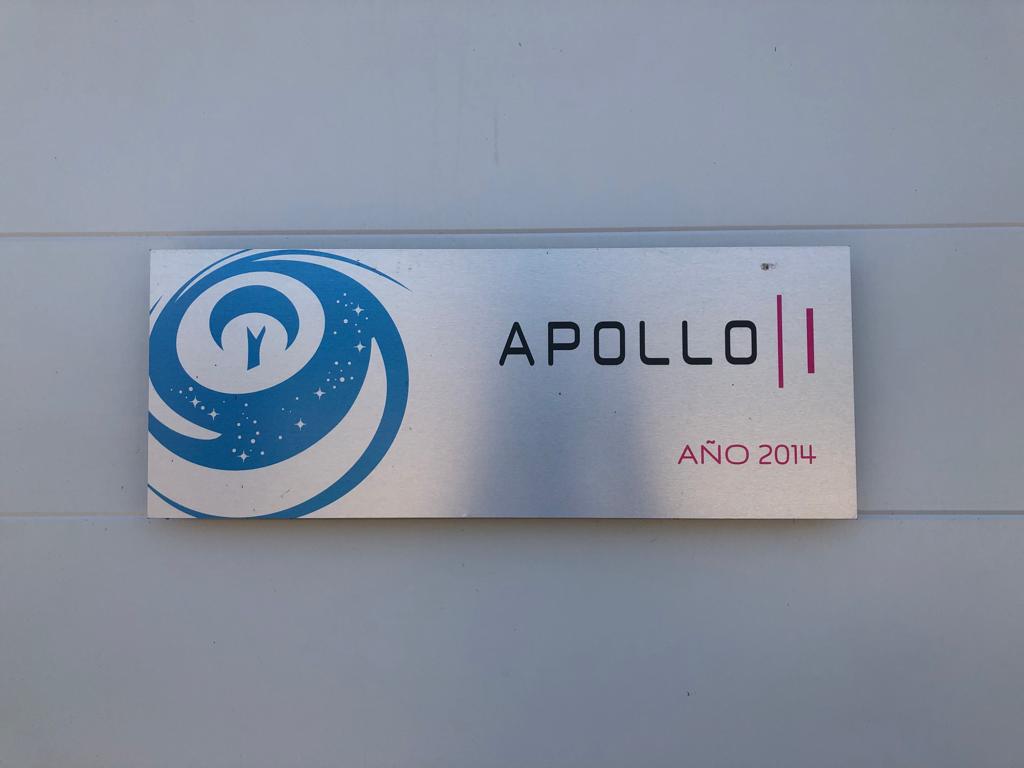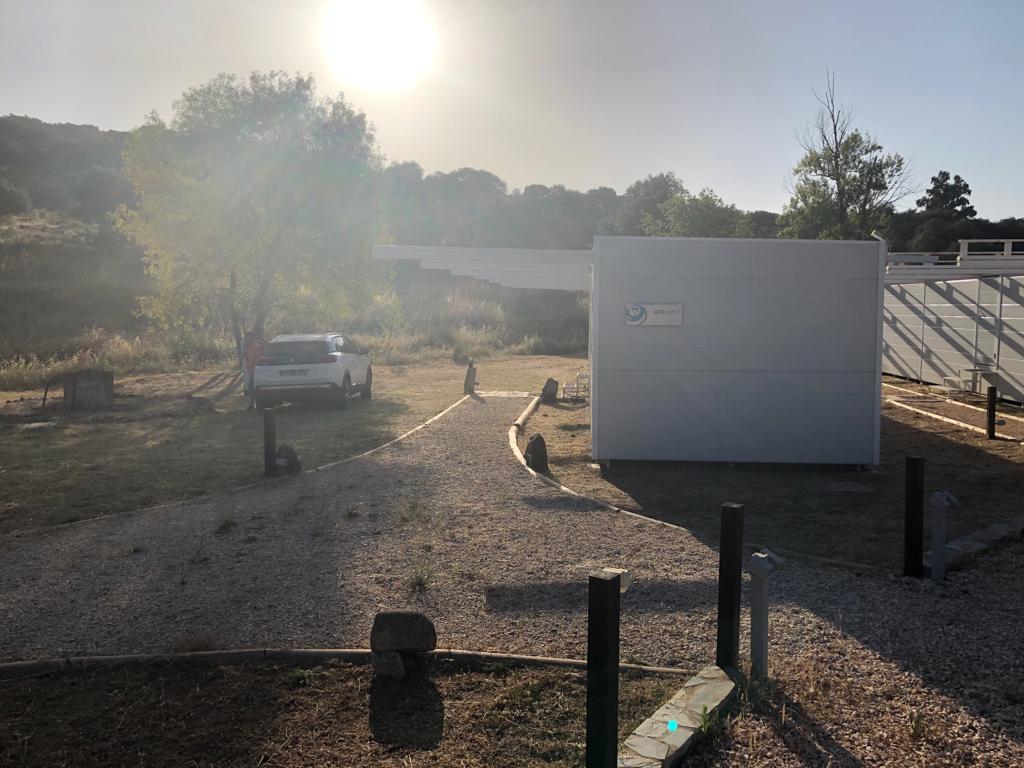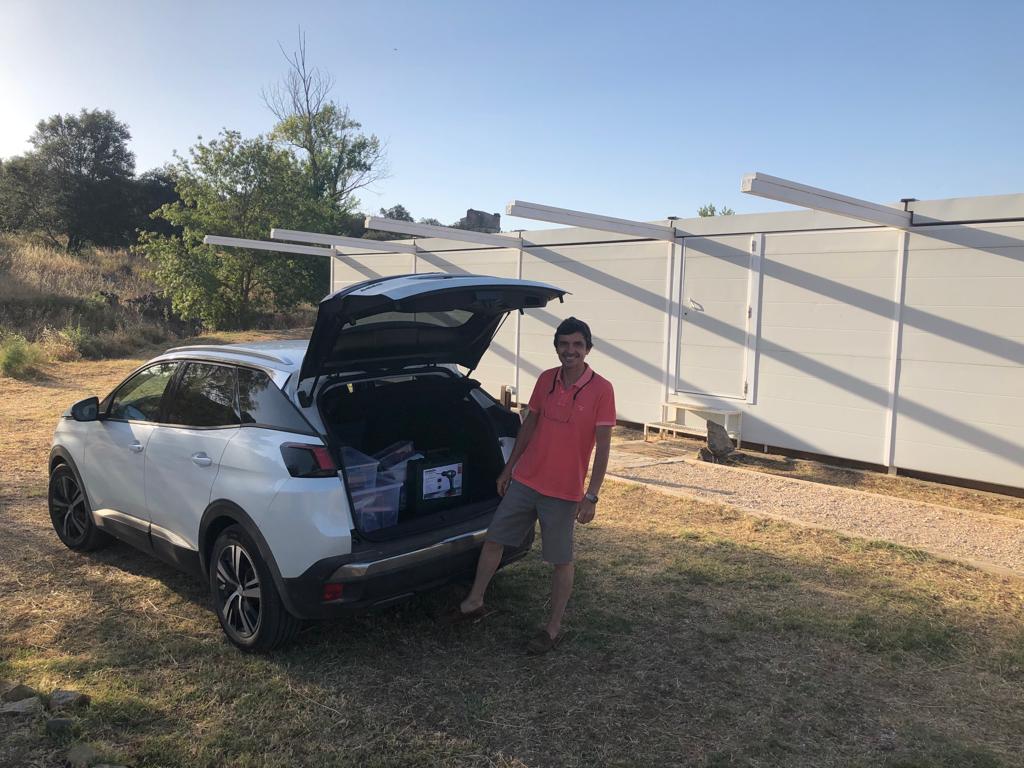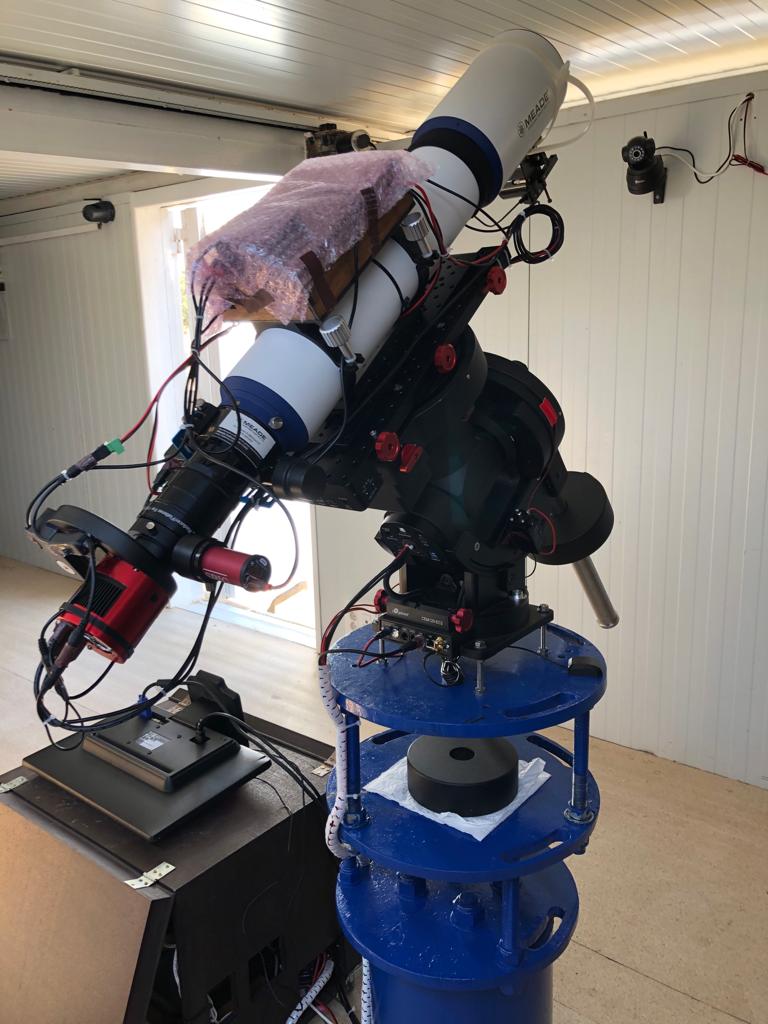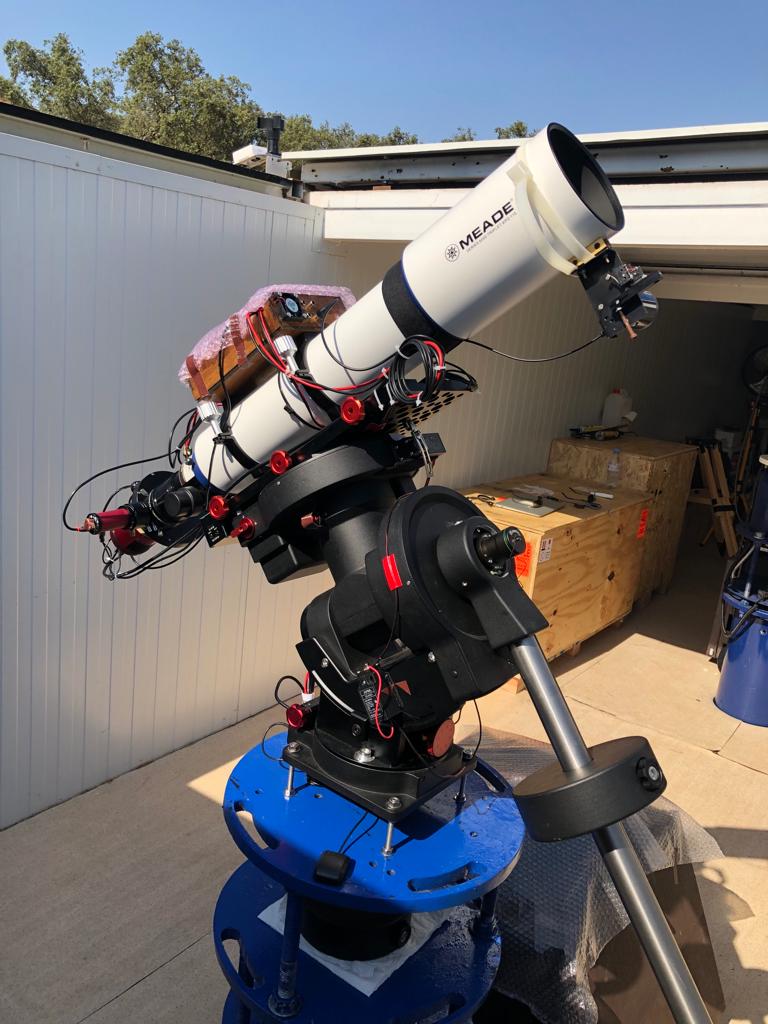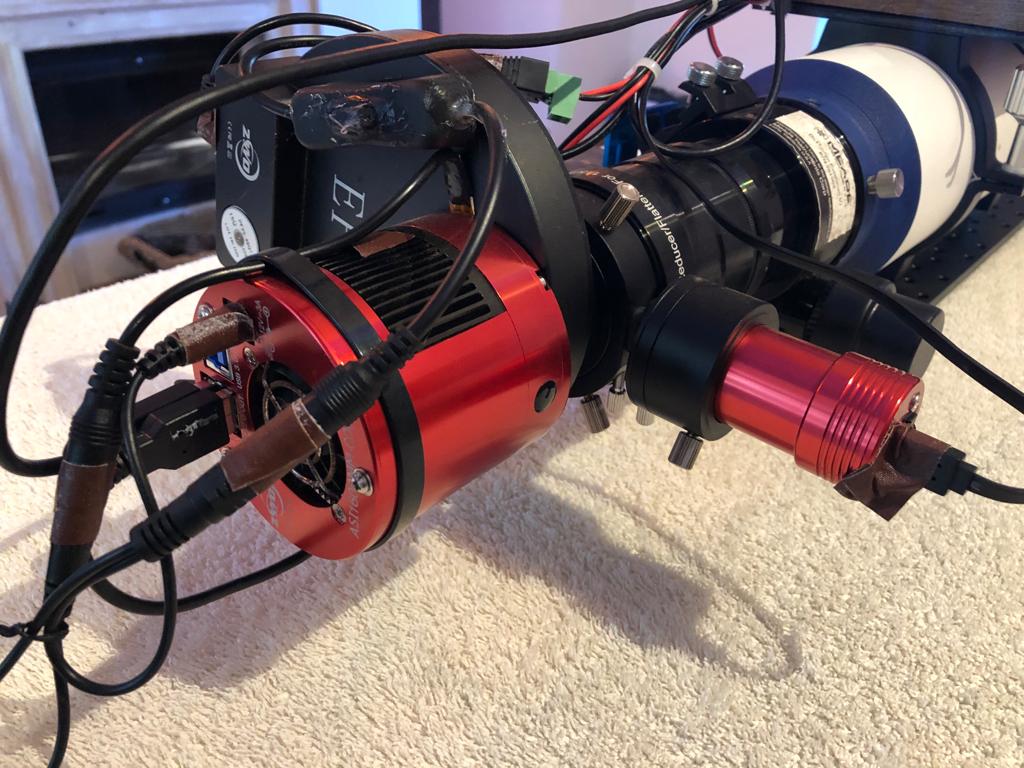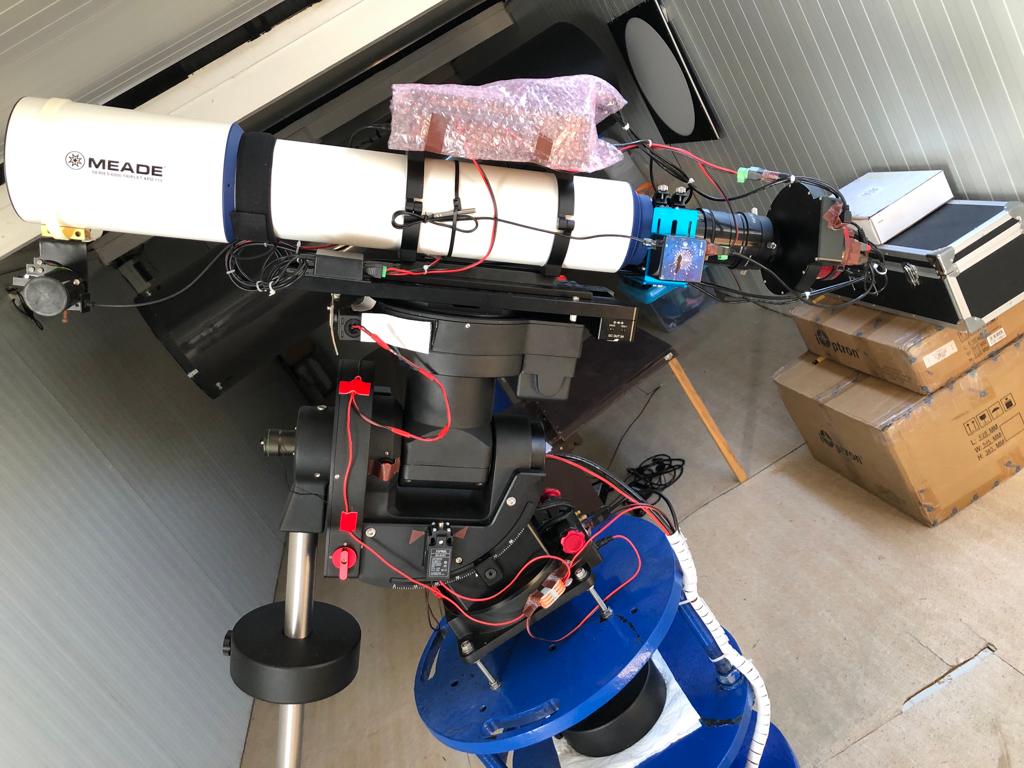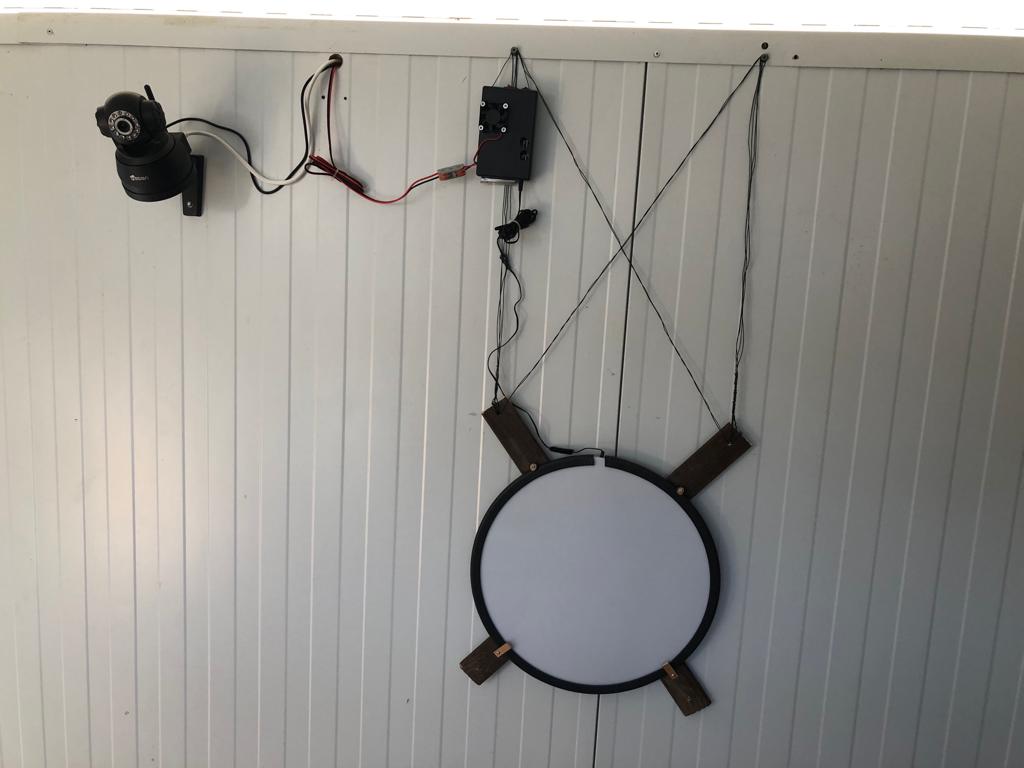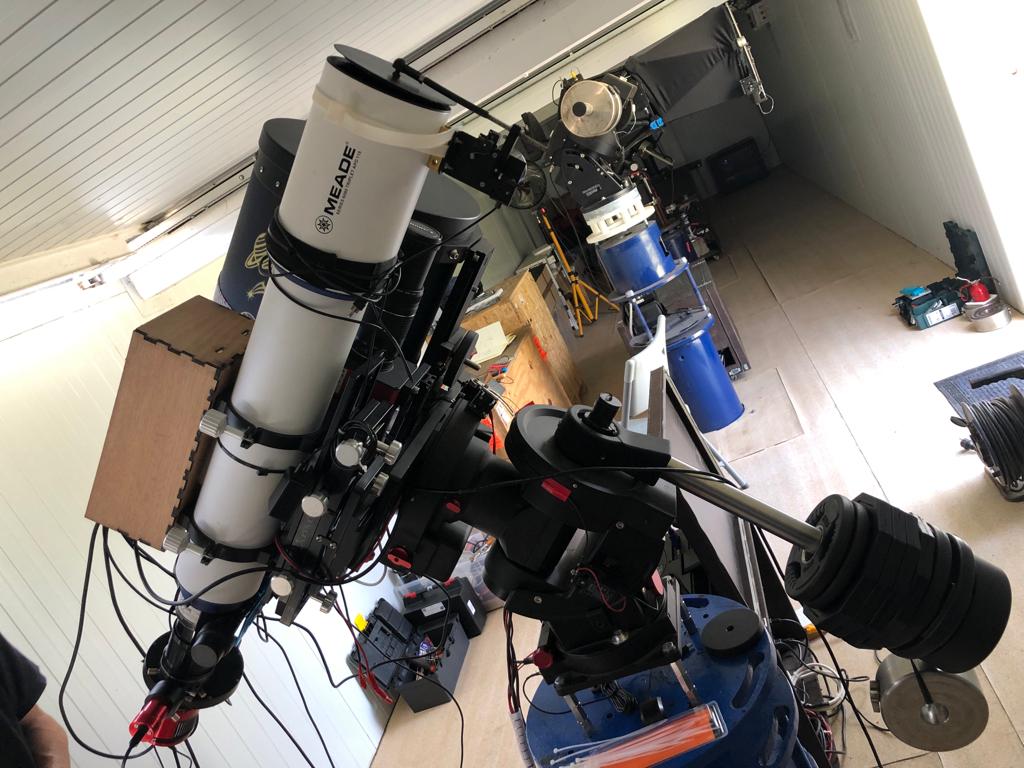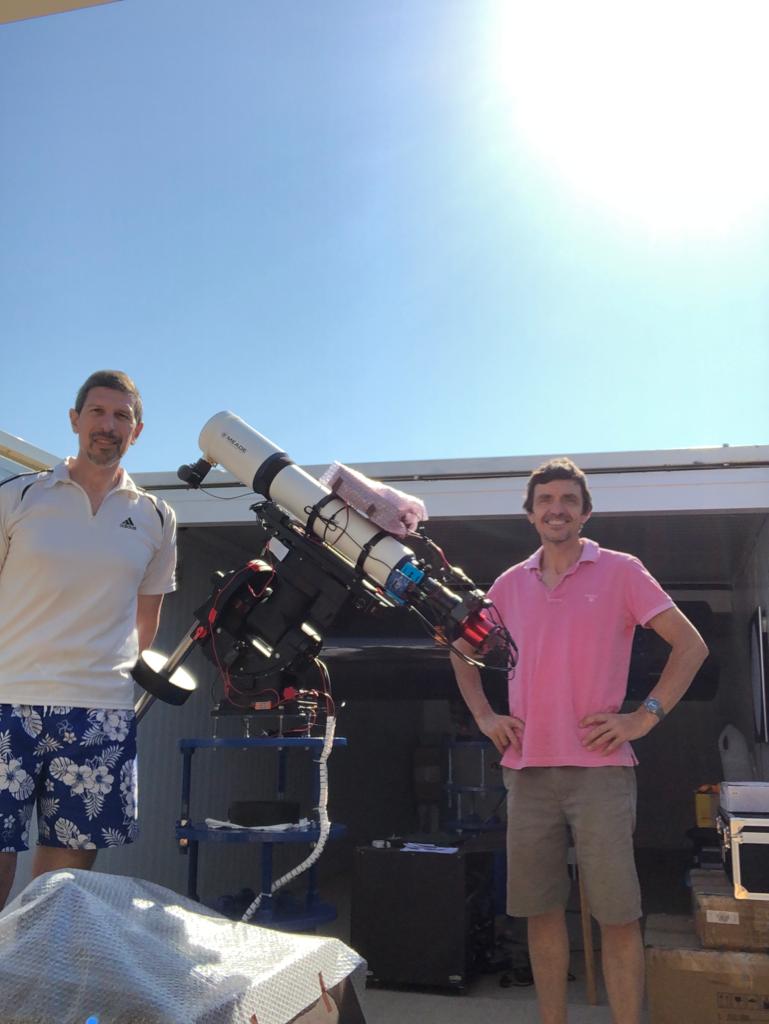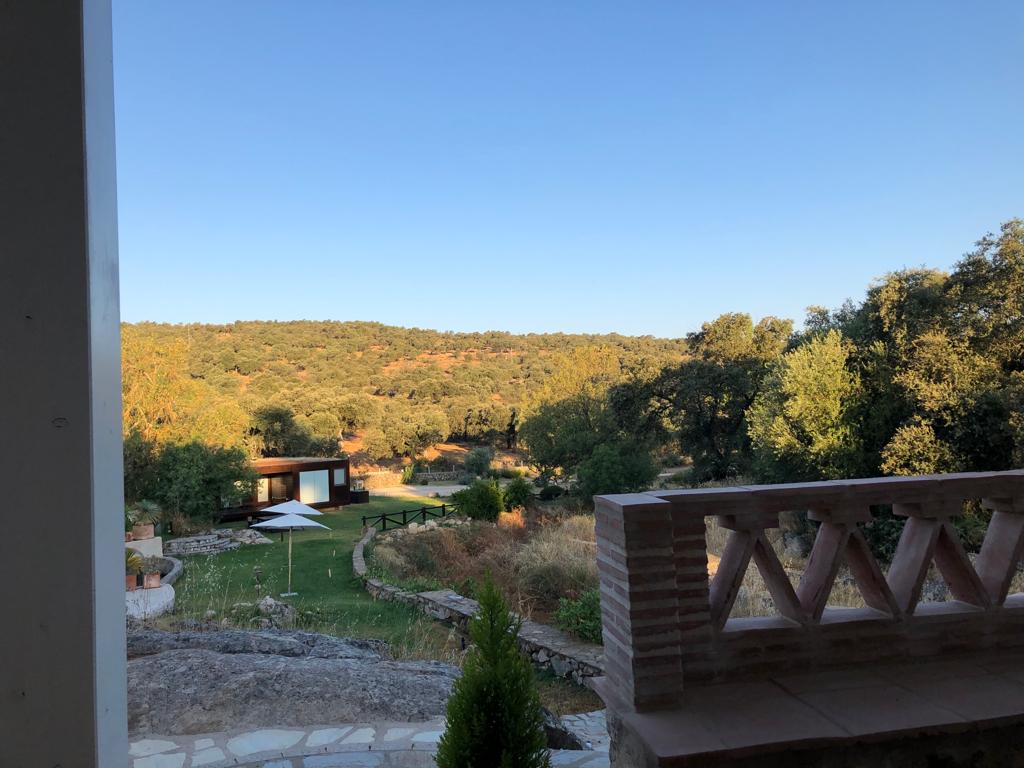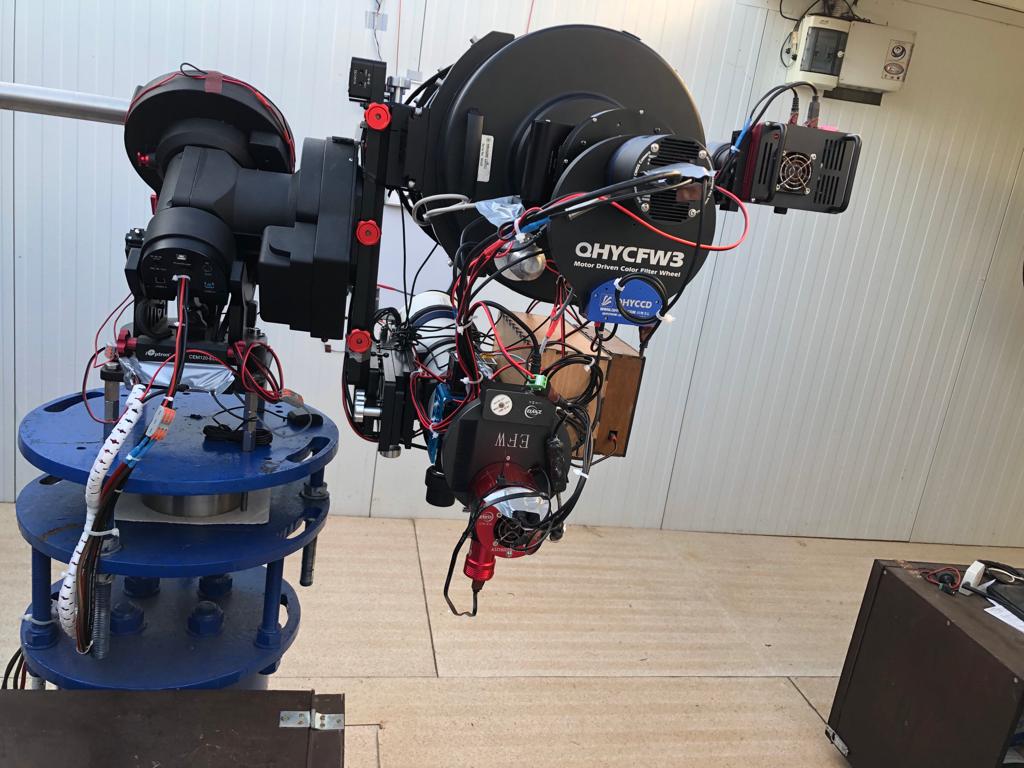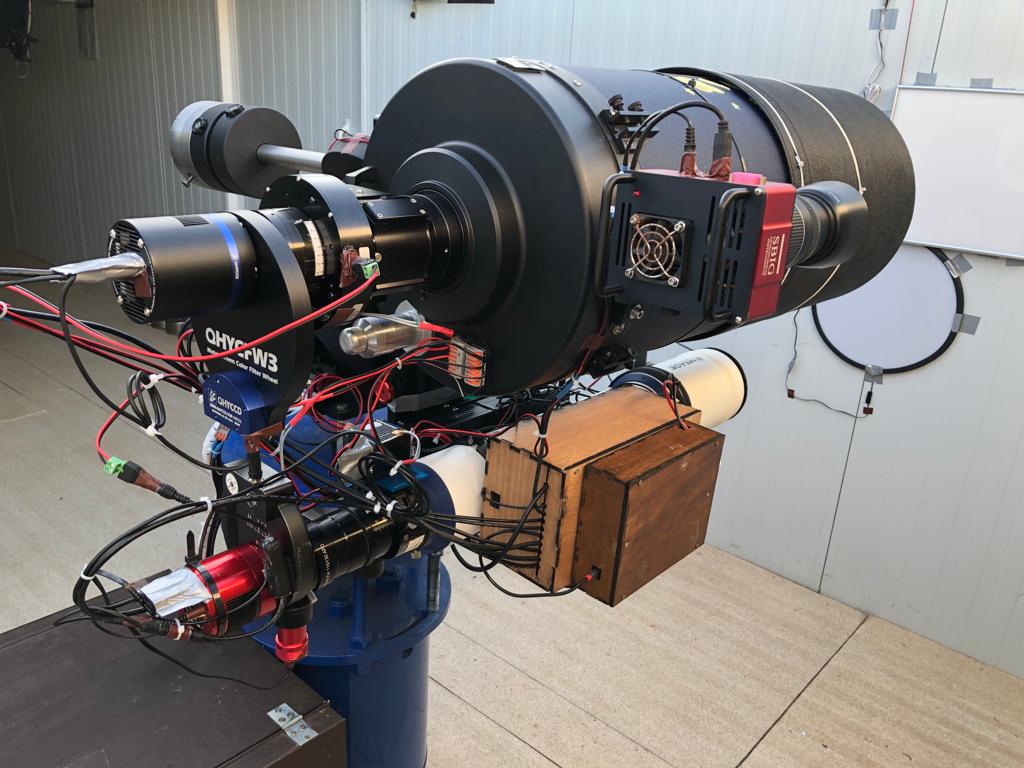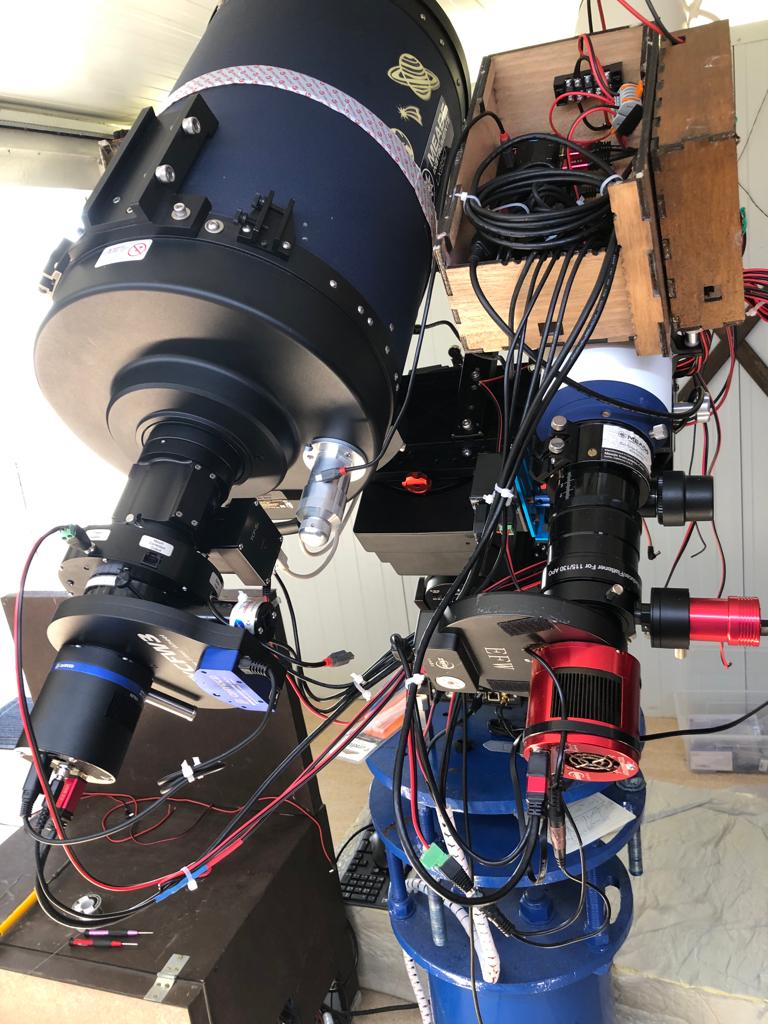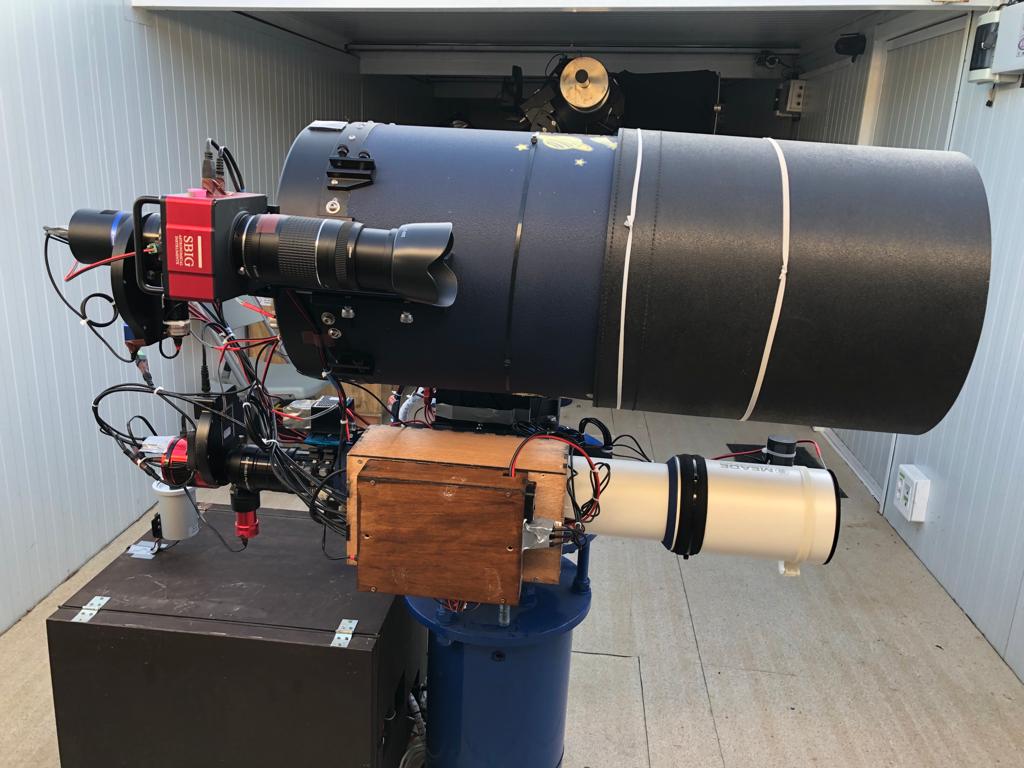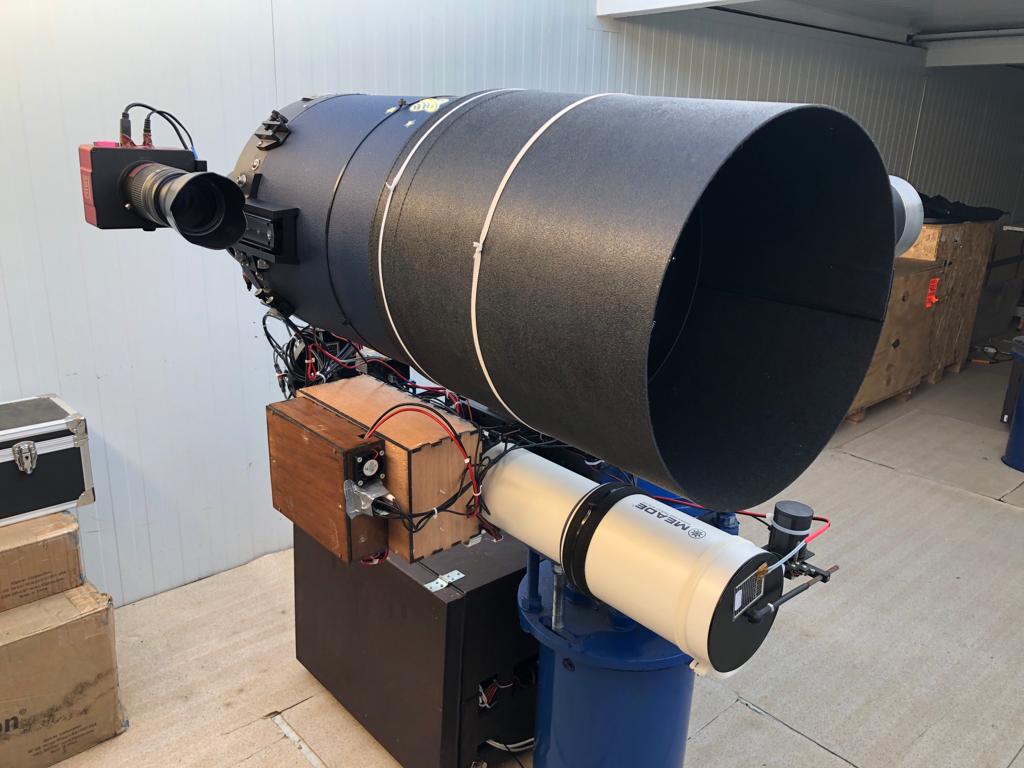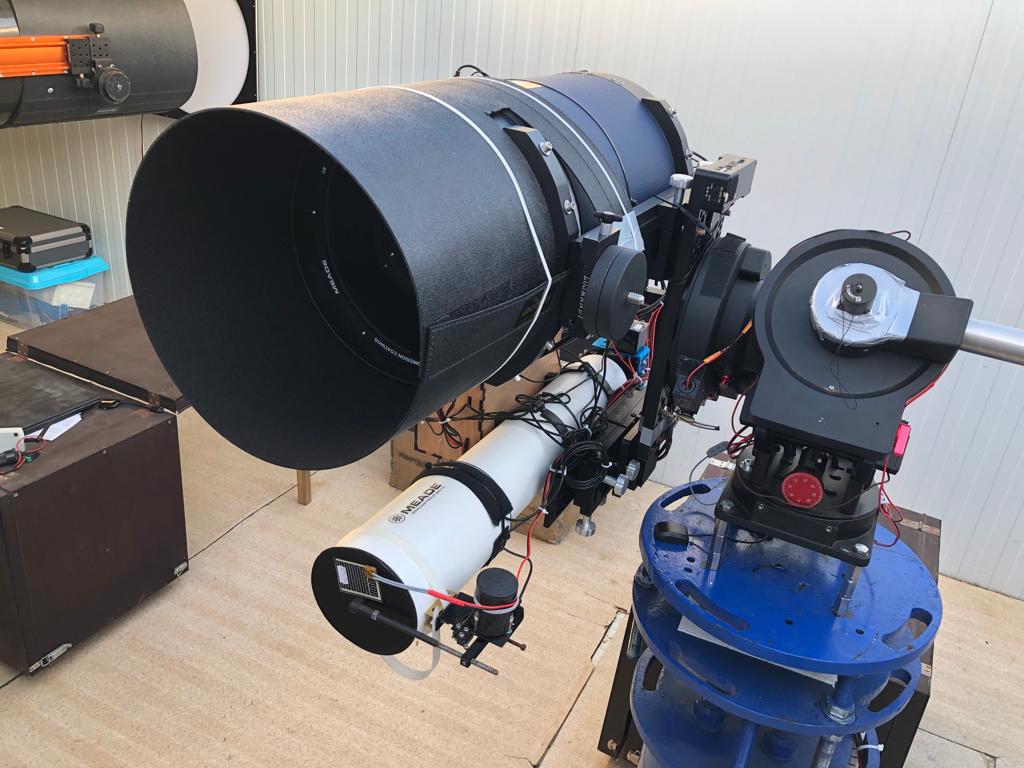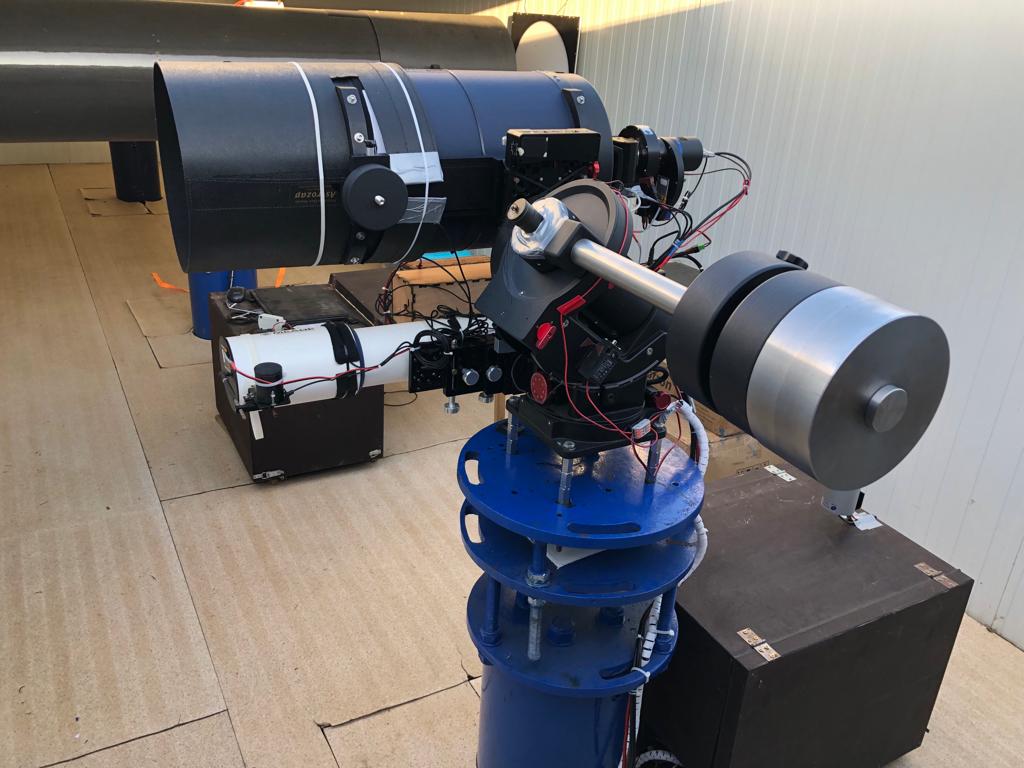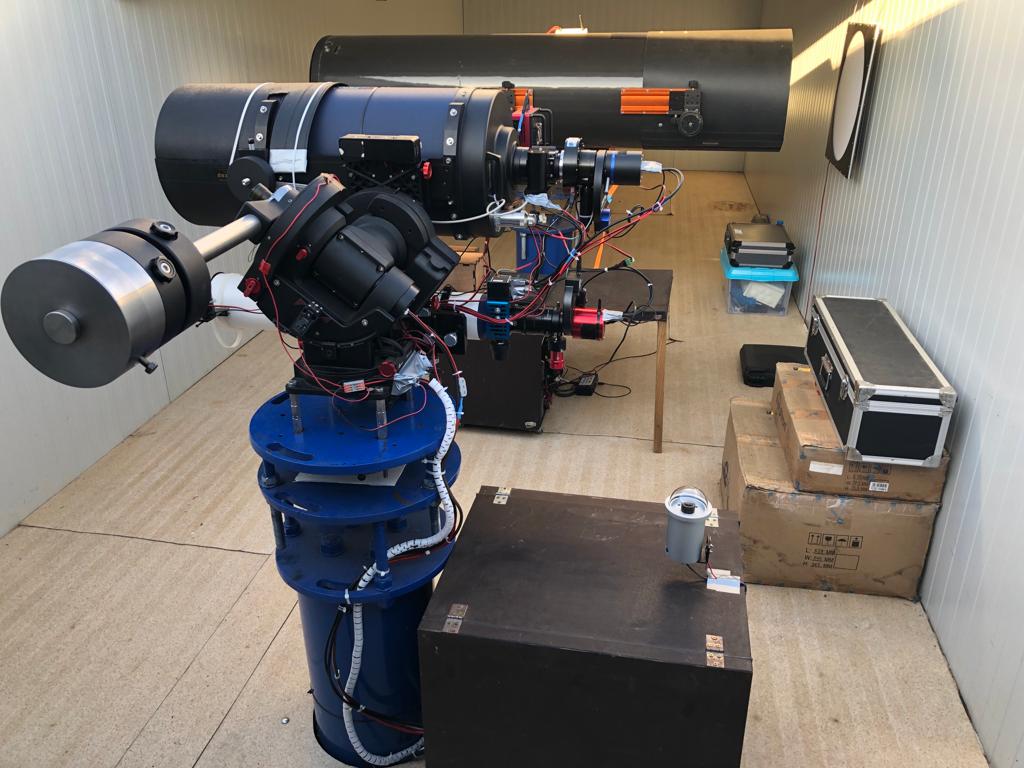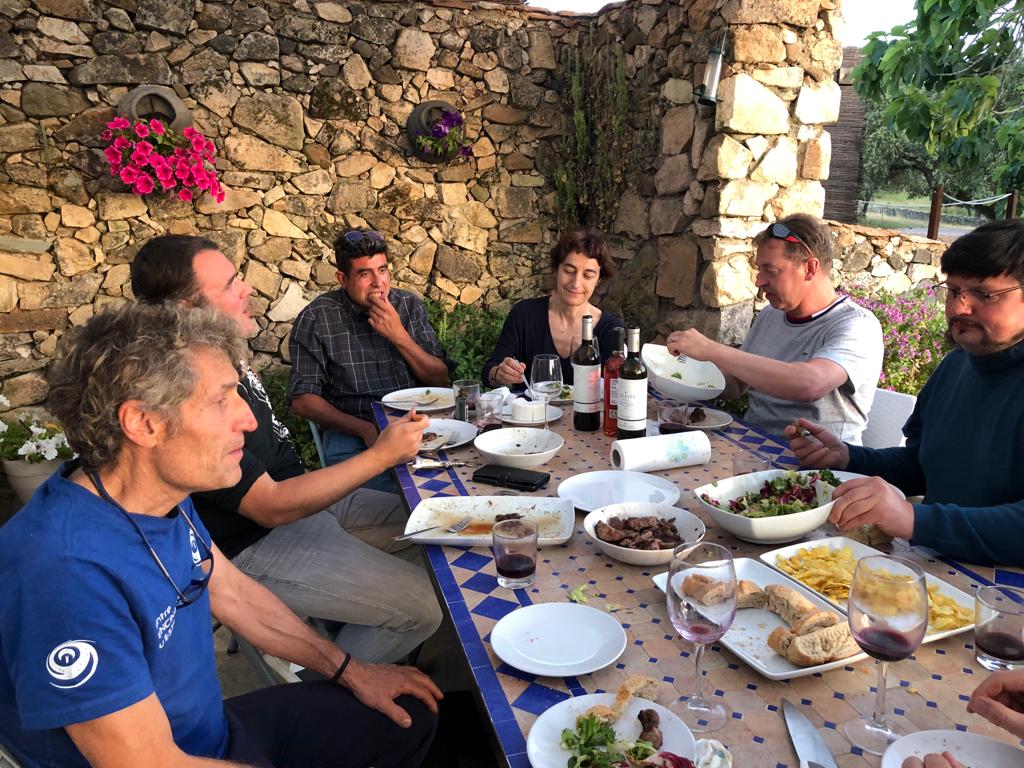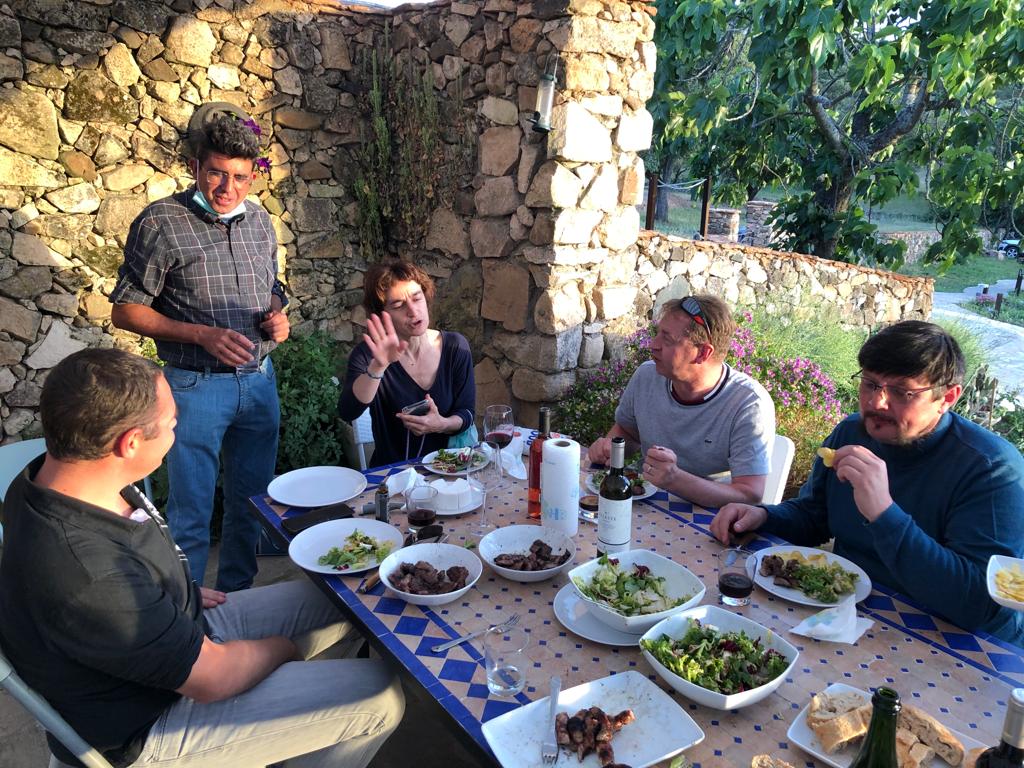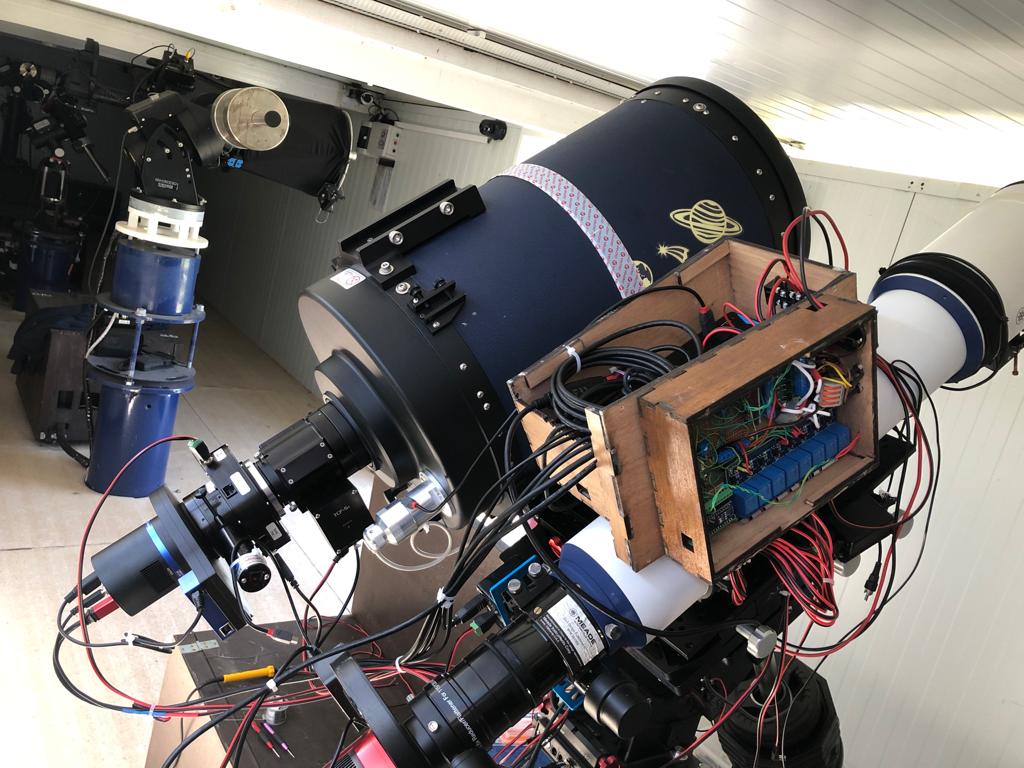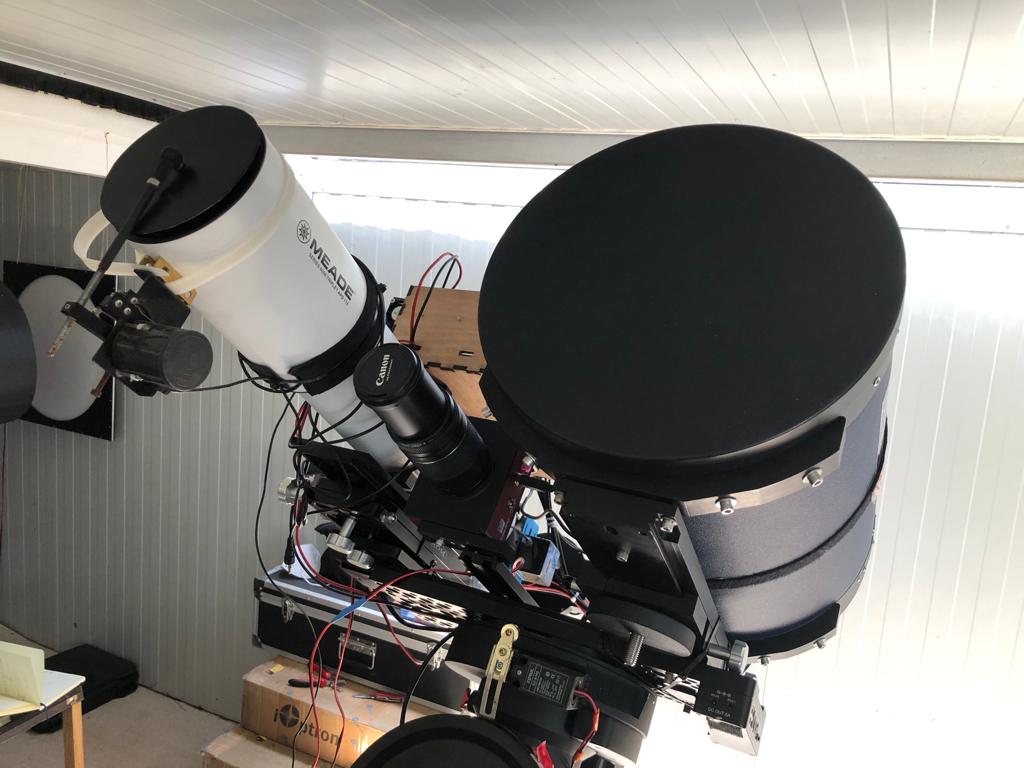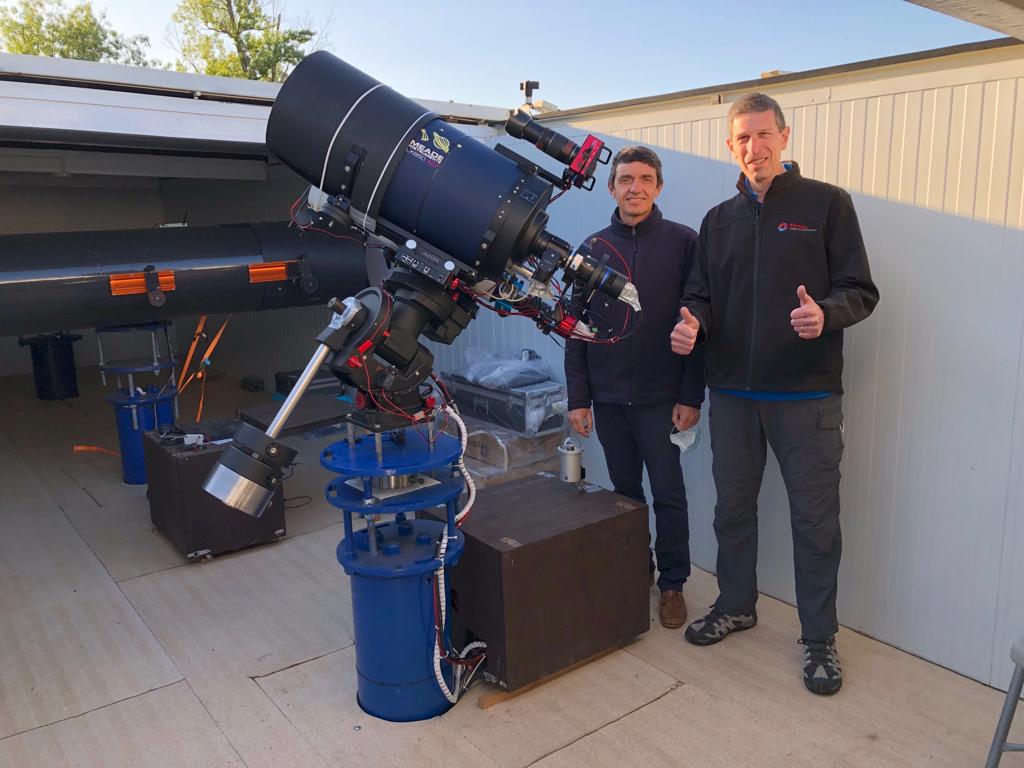That's what happened to us on a trip to Spain in February 2019...
Thinking back, in June 2018 we had to say goodbye to Australia. It wasn't easy, especially when you feel you have found your place in the world, but work was taking us in new directions.
As a family we embrace a ‘philosophy of life’ which is to accept that we are always in the right place, at the right time, even though sometimes that may not seem to make sense, or that we are going against our plans, against our dreams.
In Western Australia we enjoyed 6 years of spectacular skies. Every day nature gave us a work of art, during the day it was the sunrises and sunsets. At night it was the spectacle of the Milky Way in all its splendour. I remember that we were amazed when we saw a cloud.
Our destination after WA was exactly the opposite.
We moved to the outskirts of Paris, the so-called "City of Light" (which we believe is because many months of the year are lived under artificial light) where the sky is generally grey, rain is the usual company and vitamin D becomes essential.
Just for you to picture that, in the first 5 days of 2019 Paris enjoyed only 4 minutes of sunshine! Meteorologists have as the queen of their vocabulary the word "grisaille", which means greyish in colour, or something drab, dull, not of great interest, melancholy, sad.
You can't imagine what that meant for my passion for astrophotography, still, I gave it a try.
I set up the telescope, first inside the house (to be more precise inside my office), all with the idea of advancing in remote handling, already foreseeing that it would not survive the freezing nights that awaited me in the winter. I then moved it to the garden, but the weather, coupled with the city lights running full blast from 5 pm (the time of nightfall in autumn-winter), made my effort futile.
I continued to indulge my passion with the data I had managed to obtain in Western Australia. I reworked some photos that I initially thought were great and found I could improve on them as I continued to learn.
In February 2019 with my wife, we planned a trip to southern Spain. We randomly chose the city of Seville, the program simply consisted of renting a car and touring the area a bit.
My wife suggested that we look for a destination for astro-tourism and that's how Entre Encinas y Estrellas (e-EyE), a venture that combines telescope hosting and accommodation, appeared on the map. Here their website: https://www.e-eye.es/en/e-eye-en/
I had never known about this type of enterprise before; it was a valuable and unexpected discovery.
Entre Encinas y Estrellas basically offers the possibility of placing a telescope in a place that has excellent conditions for an astronomy and astrophotography enthusiast to enjoy the sky, living anywhere on the planet !
For me, discovering this possibility was like touching the sky with my hands, it was like finding the source of happiness.
I spent my very short stay at e-EyE admiring the facilities, asking many questions, trying to understand how it works, dreaming that one day, perhaps, I would be lucky enough to be able to place a telescope in one of their modules called ‘Apollos’.
We met the owners, José Luis and Cristina, and immediately realized that we were on the same wavelength.
It was a short but very intense experience, it was like planting a seed that continued its process, almost without us realizing it.
Returning to France I missed Western Australia and now Fregenal de la Sierra, where Entre Encinas y Estrellas is located, has been added to the list.
In 2020, my frustration led me to think about the possibility of placing a telescope in Spain with more determination, but it was something I could not allow myself to do on my own.
And again, the answer came, a former work colleague, Daniel Plathey, who had retired, an astronomy fanatic, with whom I had met again "thanks" to my return to Paris, was the piece that completed the puzzle.
Obviously he also suffered from this "hunger for a clear sky", so when I told him about the possibility of installing a telescope in a privileged place, which would allow us to easily obtain all the data we wanted, that we would stop worrying about the grey sky, the clouds, the rain, the cold, the heat, the light pollution, etc., etc., I didn't have to do much to convince him.
The year 2020 was one of the toughest years for modern mankind. Without really understanding what the threat was, for those of us who did not live in the places where it first wreaked havoc, a virus, invisible to us, put us in danger and could condemn us to spend weeks in intensive care requiring an artificial respirator, perhaps it could cause our death, or it could not happen at all.
The bewilderment and anguish at that time were palpable. We were forced to stay indoors, and our only means of escape was to buy basic products; the masks partly hid our faces of fear and despair; the gloves and alcohol gel became essential items.
In the midst of this stressful pause, the project to install a telescope in Fregenal de la Sierra began to take shape. With Daniel, we got down to work and this served as a luxury lifeline for the situation in which we were all immersed. The excitement of beginning to realize this dream counteracted many of the fears caused by the situation the planet was in.
It wasn't easy to plan, but luck struck again, and the French government announced a reopening of borders for summer 2020. We saw a new classification of countries into green, orange, red which implied where you could travel to and, serendipity again, Spain was a green country! So, we loaded everything into Daniel's car and set off on our adventure.
I took a train to Bordeaux, France and from there we continued together.
It was just over 1,000 kilometers to Fregenal de la Sierra so we decided to make an intermediate stop in Salamanca after 690 kilometers. We arrived at Entre Encinas y Estrellas on the 11th of July 2020 and got down to work.
Although we had assembled and tested all the equipment, even simulating a remote operation 1 meter away from it, in France, we knew that the task was not going to be easy.
The first thing to do was to unload all the components that were in the boot of the car and make sure there was no damage. Fortunately, everything went smoothly !
Once inside the observatory, the installation of the mount is the fundamental step for the construction of the system, for this we had to drill the 1-inch steel plate at the top of the pedestal that serves as the base of the telescope. Luckily, we had the help of José Manuel from e-EyE and the fixed drill in the workshop; the task took about 3 hours.
We had provided for every screw in our arsenal of accessories, so the task of mounting the plate and the mount was quite simple. Next, we installed the Meade Series 600 APO 115mm telescope, the ZWO 1600m camera with its filter wheel, essential for balancing the load on the mount and its counterweights. I think this was the end of the first day of work and we went to the Plaza Constitución in Fregenal to have some tapas and a beer at the Bar Lara.
The next day, after a hearty breakfast enjoying the views of the sierras surrounding the e-EyE complex, we set about the installation of the electrical, computer and weather station. This involved setting up the IT cabinet which includes the computer to which we will connect from France to operate the system, the router, the relay box (DrogonFly - which distributes the power to the different equipment in the cabinet), the 12V power supply, the flats panel command, and the UPS. We also had to install the wiring to control the opening and closing of the roof, the weather station outside the structure and hang the flats panel on the north wall of the observatory. These activities completed our entire second day of work and most of the third. Luckily Bar Lara was always waiting for us with a tasty dinner and a beer, for which we were grateful.
During the fourth day we devoted ourselves to the telescope and its wiring. We installed a second relay box (Hitec - which distributes the power to the different equipment of the telescope), also a USB hub for the communication with the focuser, the filter wheel, the main camera, the guiding camera, and the snap-cap covering the telescope optics. We also installed a heater for the optics to prevent condensation on cold winter nights.
The fifth day was spent performing all the necessary tests to make sure that all the systems worked as we had imagined them months ago. Luckily or not, as we had designed, redesigned, adjusted, tested and re-tested everything before arriving at e-EyE, everything worked as we had planned, except for the guiding camera which didn't want to work !!!!
But the final verdict would be given by the images we would get in the evening. After the mandatory visit to the Bar Lara and sunset (around 11pm in July) we returned enthusiastically to the observatory for the ‘first light’.
At that moment we could confirm that the work did several months ago in engineering and preparation were not in vain, everything was working and the first images were of very high quality !!!!
The mount gave us drift-free images for +5 minutes so the non-functioning of the guiding camera did not represent a problem to obtain LRGB images (we would replace it a month later by sending a new one by mail that José Manuel took care to put in its place).
The next day and after a short night, but full of satisfaction because we were leaving a complex system working, we started our way back. We stopped again in Salamanca and while enjoying a "cañita" we launched our telescope remotely for the first time. WOW, everything was working as we had dreamed or better... !!!!
Back in France and enjoying our telescope every clear night, we started to prepare an upgrade: installation of a second telescope in parallel. It would be a Meade LX850 12" with 2430 mm focal length, it would give us the possibility to image galaxies, planetary nebulae, and science.
So, after another meticulous planning and purchase of the necessary materials, on the 17th of May 2021 we set off on another trip to Fregenal de la Sierra.
It was like starting from scratch, the whole system had to be dismantled as, due to the weight of the two telescopes and the counterweights to be added, the bolts of the mount had to be reinforced and also enlarge the holes in the steel plate. This time it was easier as we brought our own drill.
The assembly of both telescopes on their new platform went smoothly until we had to balance the mount... Impossible !!!! We were missing more than 10 kilos of counterweight, what happened to our calculations?
We started to search: internet -> suppliers in Europe, any shipment would take more than a week; e-EyE -> nobody had the right hole/shaft size; what to do? We decided to go to the neighboring town of Zafra and to a lathe shop that was recommended to us in Fregenal. Ricardo received us very well and after explaining the problems, what we needed and our urgency; he told us that in two days he could make them (one of 15kg and the other of 5kg counterweights) => Saved! This would not have been possible in any other country: Viva España !!!!
We took advantage of those two days to complete the rest of the tasks and by adding the counterweights, the whole installation was completed as planned.
We went back home and the reflection on how to improve the system started again: this time the objective was to change the cameras for last generation CMOS; a ZWO 2600m for the refractor and a QHY263m for the SCT.
November 2021, this time we took the plane to Seville as there was not so much equipment to transport. The journey between Seville airport and the observatory is only 150km, less than two hours over a scenic route.
Replacing the cameras was straightforward, but as we took the first images, we noticed that the QHY was returning slightly distorted images from the 12" SCT. What was happening? The backfocus distance for the focal reducer was not correct ! Another miscalculation ! Yes and no. We had relied on the QHY diagrams just to realize at the time that they were not correct ☹ The new camera could not be installed, the solution was to change the length of the focal reducer extension or to remove it, for which we needed to manufacture a custom adapter. We opted for the latter solution.
In April 2022 the adapter was available and so were we for the fourth mission to e-EyE. I think we felt so good there, in Fregenal, in the Bar Lara that we were looking for any excuse to come back 😉.
The QHY camera was changed and tested, we cleaned the optics, did some general maintenance and we dedicated ourselves to enjoy our stay between Encinas y Estrellas.
Thinking back, in June 2018 we had to say goodbye to Australia. It wasn't easy, especially when you feel you have found your place in the world, but work was taking us in new directions.
As a family we embrace a ‘philosophy of life’ which is to accept that we are always in the right place, at the right time, even though sometimes that may not seem to make sense, or that we are going against our plans, against our dreams.
In Western Australia we enjoyed 6 years of spectacular skies. Every day nature gave us a work of art, during the day it was the sunrises and sunsets. At night it was the spectacle of the Milky Way in all its splendour. I remember that we were amazed when we saw a cloud.
Our destination after WA was exactly the opposite.
We moved to the outskirts of Paris, the so-called "City of Light" (which we believe is because many months of the year are lived under artificial light) where the sky is generally grey, rain is the usual company and vitamin D becomes essential.
Just for you to picture that, in the first 5 days of 2019 Paris enjoyed only 4 minutes of sunshine! Meteorologists have as the queen of their vocabulary the word "grisaille", which means greyish in colour, or something drab, dull, not of great interest, melancholy, sad.
You can't imagine what that meant for my passion for astrophotography, still, I gave it a try.
I set up the telescope, first inside the house (to be more precise inside my office), all with the idea of advancing in remote handling, already foreseeing that it would not survive the freezing nights that awaited me in the winter. I then moved it to the garden, but the weather, coupled with the city lights running full blast from 5 pm (the time of nightfall in autumn-winter), made my effort futile.
I continued to indulge my passion with the data I had managed to obtain in Western Australia. I reworked some photos that I initially thought were great and found I could improve on them as I continued to learn.
In February 2019 with my wife, we planned a trip to southern Spain. We randomly chose the city of Seville, the program simply consisted of renting a car and touring the area a bit.
My wife suggested that we look for a destination for astro-tourism and that's how Entre Encinas y Estrellas (e-EyE), a venture that combines telescope hosting and accommodation, appeared on the map. Here their website: https://www.e-eye.es/en/e-eye-en/
I had never known about this type of enterprise before; it was a valuable and unexpected discovery.
Entre Encinas y Estrellas basically offers the possibility of placing a telescope in a place that has excellent conditions for an astronomy and astrophotography enthusiast to enjoy the sky, living anywhere on the planet !
For me, discovering this possibility was like touching the sky with my hands, it was like finding the source of happiness.
I spent my very short stay at e-EyE admiring the facilities, asking many questions, trying to understand how it works, dreaming that one day, perhaps, I would be lucky enough to be able to place a telescope in one of their modules called ‘Apollos’.
We met the owners, José Luis and Cristina, and immediately realized that we were on the same wavelength.
It was a short but very intense experience, it was like planting a seed that continued its process, almost without us realizing it.
Returning to France I missed Western Australia and now Fregenal de la Sierra, where Entre Encinas y Estrellas is located, has been added to the list.
In 2020, my frustration led me to think about the possibility of placing a telescope in Spain with more determination, but it was something I could not allow myself to do on my own.
And again, the answer came, a former work colleague, Daniel Plathey, who had retired, an astronomy fanatic, with whom I had met again "thanks" to my return to Paris, was the piece that completed the puzzle.
Obviously he also suffered from this "hunger for a clear sky", so when I told him about the possibility of installing a telescope in a privileged place, which would allow us to easily obtain all the data we wanted, that we would stop worrying about the grey sky, the clouds, the rain, the cold, the heat, the light pollution, etc., etc., I didn't have to do much to convince him.
The year 2020 was one of the toughest years for modern mankind. Without really understanding what the threat was, for those of us who did not live in the places where it first wreaked havoc, a virus, invisible to us, put us in danger and could condemn us to spend weeks in intensive care requiring an artificial respirator, perhaps it could cause our death, or it could not happen at all.
The bewilderment and anguish at that time were palpable. We were forced to stay indoors, and our only means of escape was to buy basic products; the masks partly hid our faces of fear and despair; the gloves and alcohol gel became essential items.
In the midst of this stressful pause, the project to install a telescope in Fregenal de la Sierra began to take shape. With Daniel, we got down to work and this served as a luxury lifeline for the situation in which we were all immersed. The excitement of beginning to realize this dream counteracted many of the fears caused by the situation the planet was in.
It wasn't easy to plan, but luck struck again, and the French government announced a reopening of borders for summer 2020. We saw a new classification of countries into green, orange, red which implied where you could travel to and, serendipity again, Spain was a green country! So, we loaded everything into Daniel's car and set off on our adventure.
I took a train to Bordeaux, France and from there we continued together.
It was just over 1,000 kilometers to Fregenal de la Sierra so we decided to make an intermediate stop in Salamanca after 690 kilometers. We arrived at Entre Encinas y Estrellas on the 11th of July 2020 and got down to work.
Although we had assembled and tested all the equipment, even simulating a remote operation 1 meter away from it, in France, we knew that the task was not going to be easy.
The first thing to do was to unload all the components that were in the boot of the car and make sure there was no damage. Fortunately, everything went smoothly !
Once inside the observatory, the installation of the mount is the fundamental step for the construction of the system, for this we had to drill the 1-inch steel plate at the top of the pedestal that serves as the base of the telescope. Luckily, we had the help of José Manuel from e-EyE and the fixed drill in the workshop; the task took about 3 hours.
We had provided for every screw in our arsenal of accessories, so the task of mounting the plate and the mount was quite simple. Next, we installed the Meade Series 600 APO 115mm telescope, the ZWO 1600m camera with its filter wheel, essential for balancing the load on the mount and its counterweights. I think this was the end of the first day of work and we went to the Plaza Constitución in Fregenal to have some tapas and a beer at the Bar Lara.
The next day, after a hearty breakfast enjoying the views of the sierras surrounding the e-EyE complex, we set about the installation of the electrical, computer and weather station. This involved setting up the IT cabinet which includes the computer to which we will connect from France to operate the system, the router, the relay box (DrogonFly - which distributes the power to the different equipment in the cabinet), the 12V power supply, the flats panel command, and the UPS. We also had to install the wiring to control the opening and closing of the roof, the weather station outside the structure and hang the flats panel on the north wall of the observatory. These activities completed our entire second day of work and most of the third. Luckily Bar Lara was always waiting for us with a tasty dinner and a beer, for which we were grateful.
During the fourth day we devoted ourselves to the telescope and its wiring. We installed a second relay box (Hitec - which distributes the power to the different equipment of the telescope), also a USB hub for the communication with the focuser, the filter wheel, the main camera, the guiding camera, and the snap-cap covering the telescope optics. We also installed a heater for the optics to prevent condensation on cold winter nights.
The fifth day was spent performing all the necessary tests to make sure that all the systems worked as we had imagined them months ago. Luckily or not, as we had designed, redesigned, adjusted, tested and re-tested everything before arriving at e-EyE, everything worked as we had planned, except for the guiding camera which didn't want to work !!!!
But the final verdict would be given by the images we would get in the evening. After the mandatory visit to the Bar Lara and sunset (around 11pm in July) we returned enthusiastically to the observatory for the ‘first light’.
At that moment we could confirm that the work did several months ago in engineering and preparation were not in vain, everything was working and the first images were of very high quality !!!!
The mount gave us drift-free images for +5 minutes so the non-functioning of the guiding camera did not represent a problem to obtain LRGB images (we would replace it a month later by sending a new one by mail that José Manuel took care to put in its place).
The next day and after a short night, but full of satisfaction because we were leaving a complex system working, we started our way back. We stopped again in Salamanca and while enjoying a "cañita" we launched our telescope remotely for the first time. WOW, everything was working as we had dreamed or better... !!!!
Back in France and enjoying our telescope every clear night, we started to prepare an upgrade: installation of a second telescope in parallel. It would be a Meade LX850 12" with 2430 mm focal length, it would give us the possibility to image galaxies, planetary nebulae, and science.
So, after another meticulous planning and purchase of the necessary materials, on the 17th of May 2021 we set off on another trip to Fregenal de la Sierra.
It was like starting from scratch, the whole system had to be dismantled as, due to the weight of the two telescopes and the counterweights to be added, the bolts of the mount had to be reinforced and also enlarge the holes in the steel plate. This time it was easier as we brought our own drill.
The assembly of both telescopes on their new platform went smoothly until we had to balance the mount... Impossible !!!! We were missing more than 10 kilos of counterweight, what happened to our calculations?
We started to search: internet -> suppliers in Europe, any shipment would take more than a week; e-EyE -> nobody had the right hole/shaft size; what to do? We decided to go to the neighboring town of Zafra and to a lathe shop that was recommended to us in Fregenal. Ricardo received us very well and after explaining the problems, what we needed and our urgency; he told us that in two days he could make them (one of 15kg and the other of 5kg counterweights) => Saved! This would not have been possible in any other country: Viva España !!!!
We took advantage of those two days to complete the rest of the tasks and by adding the counterweights, the whole installation was completed as planned.
We went back home and the reflection on how to improve the system started again: this time the objective was to change the cameras for last generation CMOS; a ZWO 2600m for the refractor and a QHY263m for the SCT.
November 2021, this time we took the plane to Seville as there was not so much equipment to transport. The journey between Seville airport and the observatory is only 150km, less than two hours over a scenic route.
Replacing the cameras was straightforward, but as we took the first images, we noticed that the QHY was returning slightly distorted images from the 12" SCT. What was happening? The backfocus distance for the focal reducer was not correct ! Another miscalculation ! Yes and no. We had relied on the QHY diagrams just to realize at the time that they were not correct ☹ The new camera could not be installed, the solution was to change the length of the focal reducer extension or to remove it, for which we needed to manufacture a custom adapter. We opted for the latter solution.
In April 2022 the adapter was available and so were we for the fourth mission to e-EyE. I think we felt so good there, in Fregenal, in the Bar Lara that we were looking for any excuse to come back 😉.
The QHY camera was changed and tested, we cleaned the optics, did some general maintenance and we dedicated ourselves to enjoy our stay between Encinas y Estrellas.
